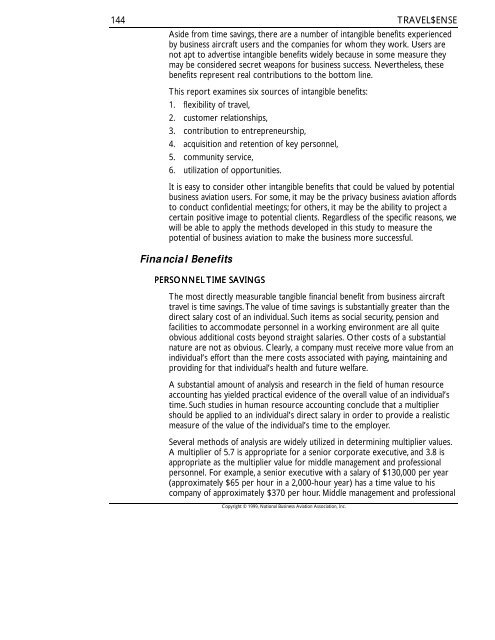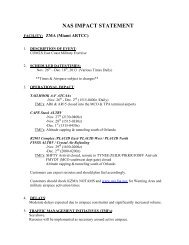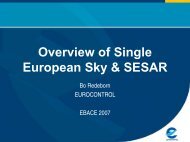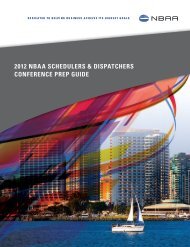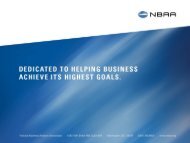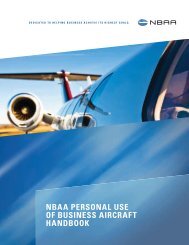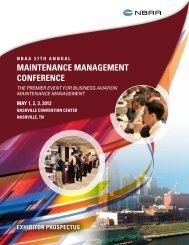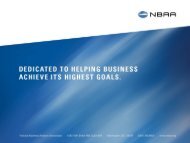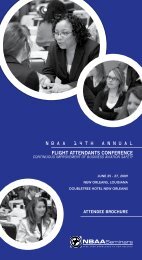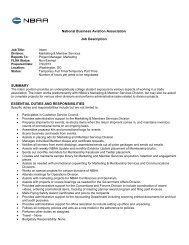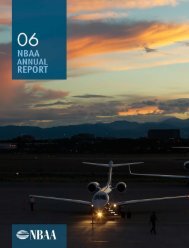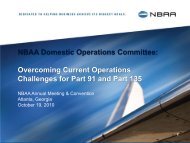Travel$ense User's Guide (PDF, 139 MB) - NBAA
Travel$ense User's Guide (PDF, 139 MB) - NBAA
Travel$ense User's Guide (PDF, 139 MB) - NBAA
- No tags were found...
You also want an ePaper? Increase the reach of your titles
YUMPU automatically turns print PDFs into web optimized ePapers that Google loves.
144TRAVEL$ENSEAside from time savings, there are a number of intangible benefits experiencedby business aircraft users and the companies for whom they work. Users arenot apt to advertise intangible benefits widely because in some measure theymay be considered secret weapons for business success. Nevertheless, thesebenefits represent real contributions to the bottom line.This report examines six sources of intangible benefits:1. flexibility of travel,2. customer relationships,3. contribution to entrepreneurship,4. acquisition and retention of key personnel,5. community service,6. utilization of opportunities.It is easy to consider other intangible benefits that could be valued by potentialbusiness aviation users. For some, it may be the privacy business aviation affordsto conduct confidential meetings; for others, it may be the ability to project acertain positive image to potential clients. Regardless of the specific reasons, wewill be able to apply the methods developed in this study to measure thepotential of business aviation to make the business more successful.Financial BenefitsPERSONNEL TIME SAVINGSThe most directly measurable tangible financial benefit from business aircrafttravel is time savings. The value of time savings is substantially greater than thedirect salary cost of an individual. Such items as social security, pension andfacilities to accommodate personnel in a working environment are all quiteobvious additional costs beyond straight salaries. Other costs of a substantialnature are not as obvious. Clearly, a company must receive more value from anindividual’s effort than the mere costs associated with paying, maintaining andproviding for that individual’s health and future welfare.A substantial amount of analysis and research in the field of human resourceaccounting has yielded practical evidence of the overall value of an individual’stime. Such studies in human resource accounting conclude that a multipliershould be applied to an individual’s direct salary in order to provide a realisticmeasure of the value of the individual’s time to the employer.Several methods of analysis are widely utilized in determining multiplier values.A multiplier of 5.7 is appropriate for a senior corporate executive, and 3.8 isappropriate as the multiplier value for middle management and professionalpersonnel. For example, a senior executive with a salary of $130,000 per year(approximately $65 per hour in a 2,000-hour year) has a time value to hiscompany of approximately $370 per hour. Middle management and professionalCopyright © 1999, National Business Aviation Association, Inc.


